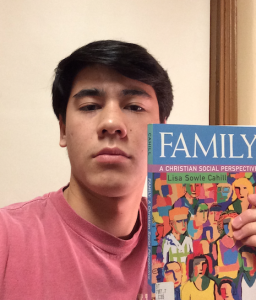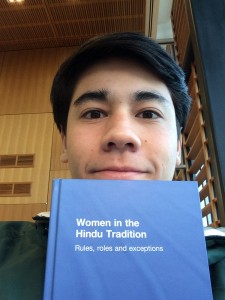Cahill, Lisa Sowle. Family: A Christian Social Perspective. Minneapolis: Fortress, 2000. Print.
Before starting my shelfie process, I initially wanted a book on the idea of domus and all that it encompassed. Thus, I went to the “OneSearch” option on the Lafayette College Library website and searched “domus” but I was unable to find a source that fit my needs. Although I didn’t find anything on the domus itself, I still wanted to find an indirect relationship between the domus and the social aspect of families in Christianity. Specifically, I wanted to learn more about how Christian families were shaped as well as any particular values they lived by. In addition, I wanted to know how the typical Christian family had changed overtime, especially through all of the major events that had marked Christianity. Therefore, I once again went to the “OneSearch” option and typed in “Christian family”. The second result was the book Family: A Christian Social Perspective, by Lisa Sowle Cahill, which contained information on what I had been looking for.
This book was not very hard to find as its cover is full of vivid colors as well as an interesting mosaic of people. The book is divided into multiple different chapters. The ones that caught my attention were “Family Bond and Christian Community: New Testament Sources”, “Family as Church: Three Historical Representations”, and “Lessons from African American Families”. While briefly flipping through the pages, I noticed that she used a lot of comparison in her reasoning. She compares families of different parts of the world, families of different time periods, and even briefly on families of different religions. This ultimately makes it relatively easy to determine the distinctions between multiple kinds of families and what the word family means to particular cultures. Additionally, she also describes multiple figures and groups in Christianity, such as Martin Luther, and how their understandings and views of the term family differed. This kind of information was what I was expecting to find after researching the different social perspectives of Christian families. If I were to write a paper on this topic it would concern the chapter “Lessons from African American Families”. Everything that we are learning now about African Americans is fascinating and it would be interesting to see if the negative perception of white Christianity transferred over to the idea of the white Christian family. It would also be interesting to see how these views impacted African American families.
Many other interesting books were located near the one written by Cahill. These books ranged from topics of other aspects of Christianity to some books on Judaism. In addition, there was a large section on the Gospels, which contained each of the individual ones. There were also a lot of books on African Americans and Christianity, which may be helpful if I choose to write my paper on them. The books were mainly about their views on Christianity along with their relationship with the religion.

